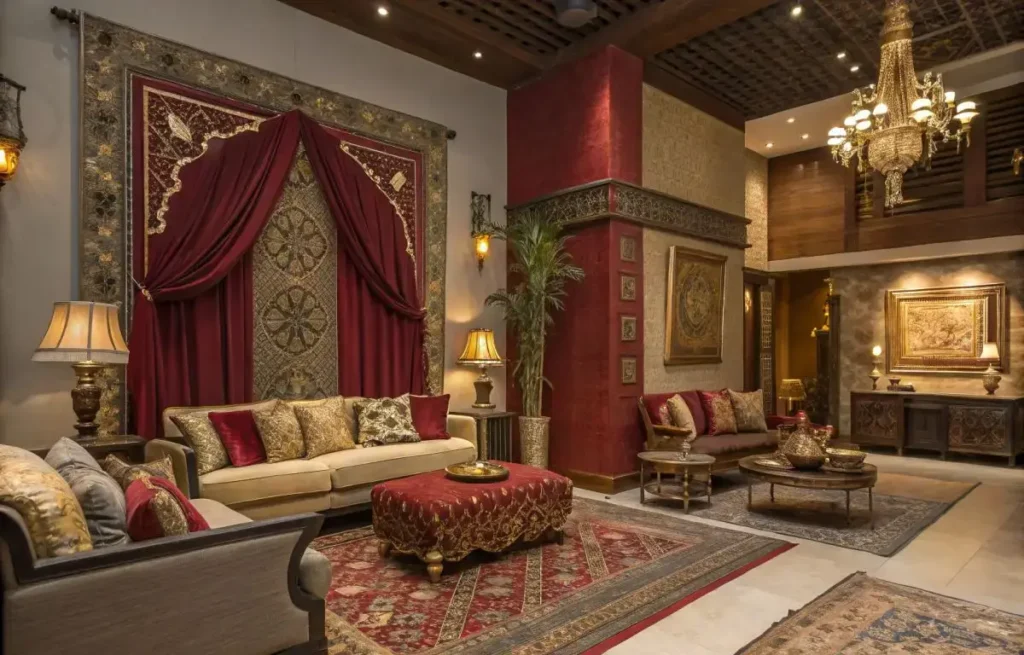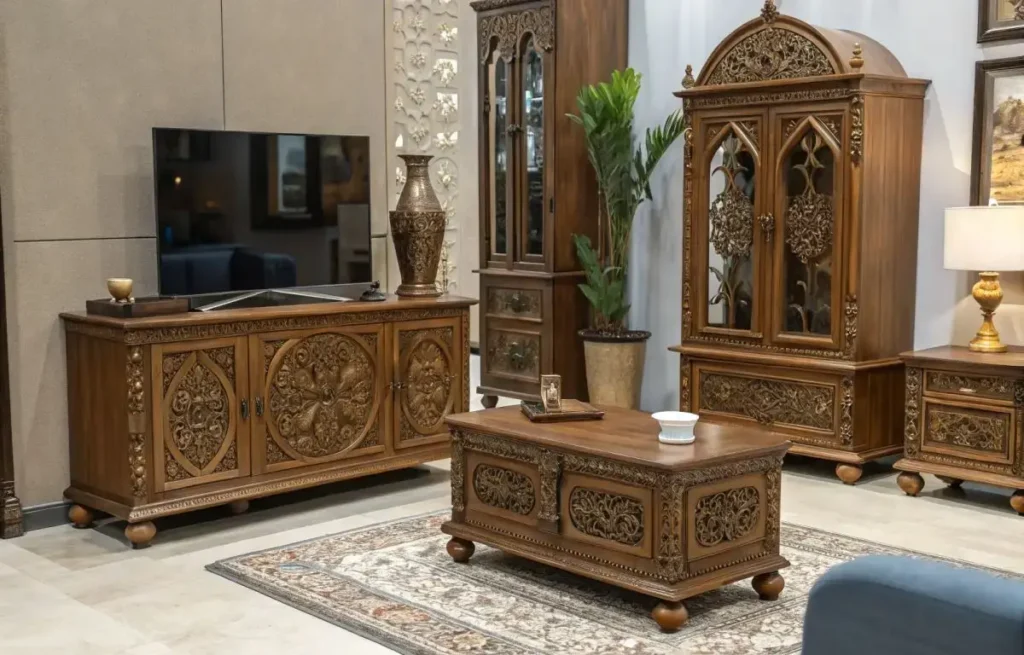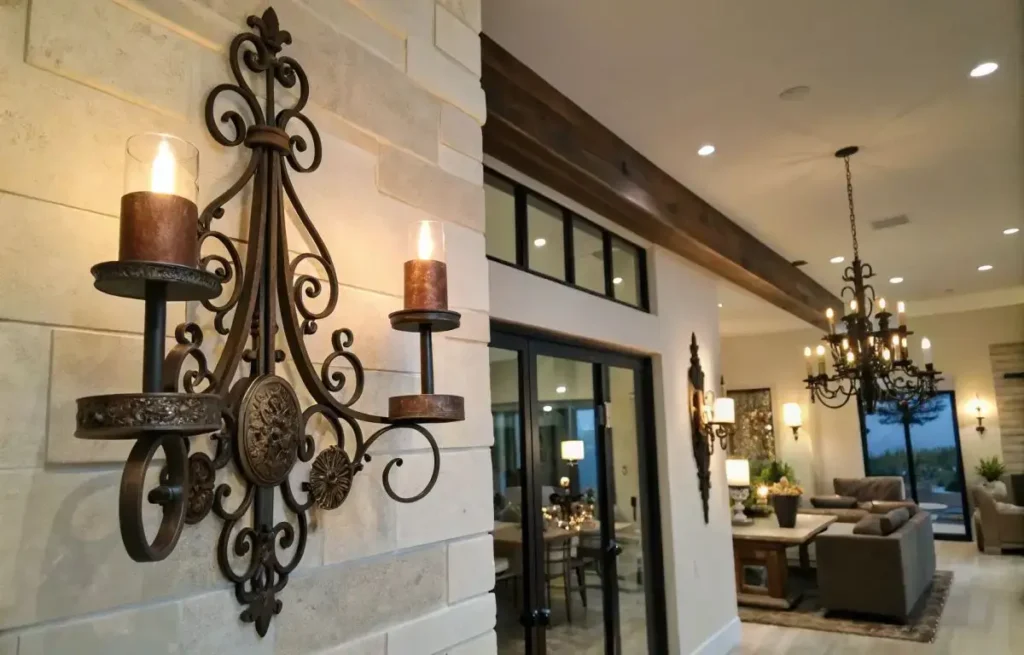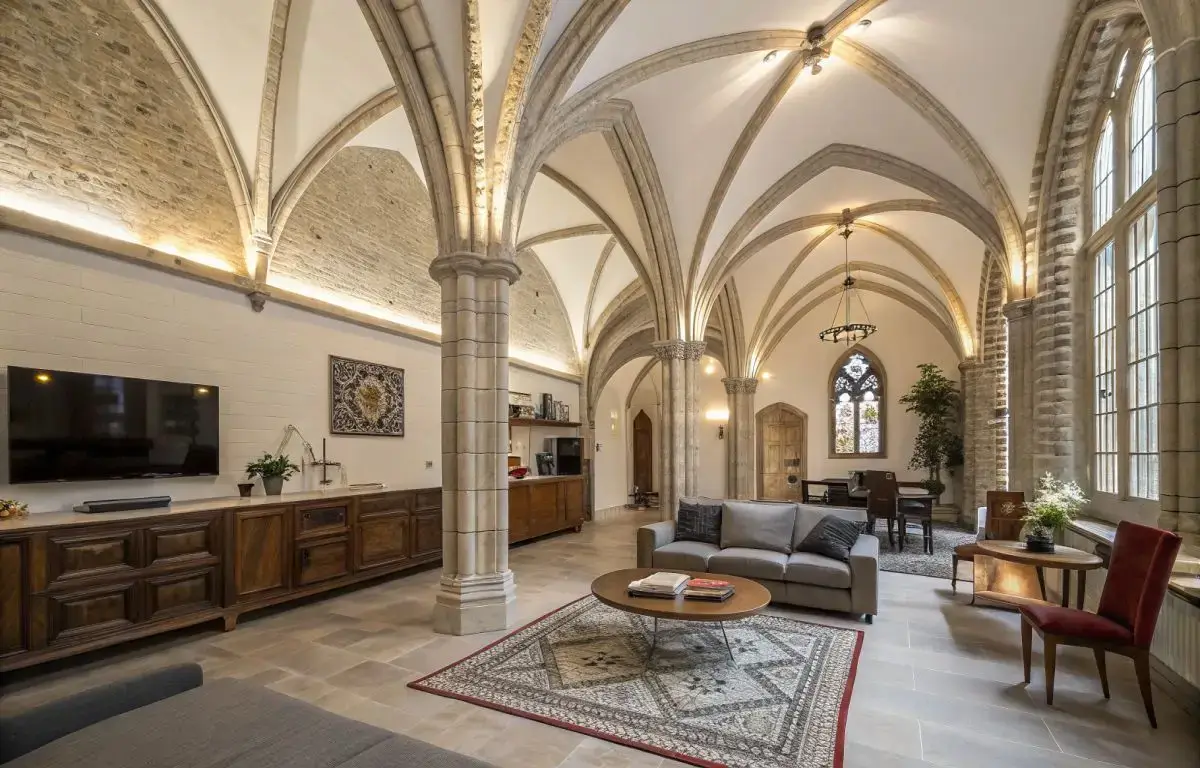The medieval interior design effect on modern homes is both profound and fascinating. Medieval design elements, once confined to castles and cathedrals, now influence modern homes. These features blend timeless beauty with contemporary style, creating a unique and welcoming atmosphere. In this article, we’ll explore how medieval aesthetics, architecture, and craftsmanship continue to shape today’s interiors.
The Timeless Influence of Medieval Architecture in Modern Homes
Medieval architecture is known for its bold, lasting features—high vaulted ceilings, arched doorways, and massive stone walls. These design elements, once common in castles, still appear in many modern homes. They provide a sense of grandeur and an earthy, ancient vibe.
How Medieval Interior Design Affects Modern Home Architecture
Medieval architecture introduced several innovations that are still relevant today. Some of the key elements that modern homes borrow include:
- Pointed arches: These arches were used in Gothic architecture to create taller, more open spaces. Today, they are still used in windows and doorways for aesthetic and practical purposes.
- Ribbed vaults: A key feature of medieval cathedrals, ribbed vaults allowed architects to create higher ceilings and expansive interiors.
- Flying buttresses: While not commonly used in modern homes, these structural supports can inspire the use of external columns or support beams in contemporary design.
Why Vaulted Ceilings and Archways Remain Popular Today
Vaulted ceilings, which were first popularized in medieval cathedrals, have always been prized for their ability to create a sense of height and space. Today, modern homes often pair these ceilings with expansive windows and open spaces to make rooms feel airy, light, and welcoming.
Some reasons for vaulted ceilings’ popularity include:
- Increased natural light: Large windows that often accompany vaulted ceilings let more sunlight in, reducing the need for artificial lighting.
- Improved airflow: High ceilings allow air to circulate better, which is particularly useful for climate control in open-plan spaces.
- Heightened sense of openness: Vaulted ceilings create a feeling of grandeur and space, making even small rooms feel larger and more welcoming.
The Role of Stone and Wood in Medieval-Inspired Home Designs
Stone and wood were central to medieval buildings, giving them their distinct, fortress-like feel. These materials were not only durable but also provided a sense of warmth and connection to nature. The combination of heavy stone walls and wooden beams was ideal for creating the enduring structures that medieval homes were known for.
Today, modern homes often bring back these medieval materials, with exposed stone walls and wooden beams making a strong comeback. Popular uses of these materials today include:
- Stone accent walls in living rooms or kitchens
- Exposed wooden beams in ceilings for a rustic, medieval feel
- Reclaimed wood furniture to add texture and history to the home
Medieval Color Palettes and Their Lasting Impact on Interior Design

Interior in medieval used deep, rich colors to convey wealth, warmth, and grandeur. These tones—ranging from reds and golds to browns and greens—were inspired by the natural world and appeared in tapestries, stained glass windows, and wall hangings. Today, these colors continue to influence modern interiors, especially in spaces that aim for warmth, luxury, and timeless elegance.
Medieval-inspired furniture continues to play a significant role in contemporary home design, combining regal details with modern functionality. For more on how medieval influences affect modern interior spaces, check out this detailed article on medieval interior design.
How the Medieval Interior Design Effect on Modern Homes Shaped Color Choices
Medieval color schemes often featured natural dyes, which were limited to earthy, rich shades. Today, modern interior designers still incorporate these colors for their timeless elegance. Popular shades include:
- Rich reds: A symbol of power and wealth, often used for accent walls or textiles.
- Golds and yellows: These hues evoke warmth, luxury, and opulence.
- Earthy browns and greens: Reflecting natural elements, they create a calming and grounded atmosphere.
The Power of Dark, Rich Tones in Contemporary Spaces
In medieval homes, dark tones served both practical and aesthetic purposes. Today, these tones are used to create a sense of drama and luxury. Popular dark tones include:
- Emerald green: Often used in accent walls or furniture pieces to add a royal touch.
- Burgundy: A deep, rich color that evokes warmth and sophistication.
- Navy blue: A deep, calming color that pairs well with metallic accents or lighter walls.
These colors are perfect for:
- Living rooms: Creating focal points with dark accent walls or furniture.
- Bedrooms: Adding depth and intimacy to the space with dark-toned linens or furniture.
- Dining areas: Using deep shades on the walls or furniture to evoke a sense of formality.
Why Medieval-Inspired Color Schemes Evoke Warmth and Elegance
All medieval color schemes weren’t just about creating visually appealing rooms—they were also intended to evoke warmth and elegance. The rich reds, yellows, and browns used in medieval interiors were designed to create a sense of comfort and luxury. Today, these colors continue to add sophistication and warmth to any space, helping to create inviting environments that make people feel at home.
By incorporating medieval-inspired colors in contemporary spaces, homeowners can evoke the grandeur and warmth of the past while ensuring that their interiors remain modern and functional.
Medieval Furniture: A Touch of Royalty in Modern Homes

The medieval furniture was known for its craftsmanship, intricacy, and durability. Large wooden tables, ornate chairs, and tapestries were central to medieval interiors. Today, modern homes incorporate these elements in ways that blend old-world charm with contemporary function.
The Medieval Interior Design Effect on Modern Homes Through Furniture
Medieval furniture was typically solid and well-crafted, often with intricate carvings that told stories or displayed the wealth of the home’s owner. Today, modern interiors incorporate heavy, solid wooden furniture that mirrors the durability of medieval pieces. Popular furniture types influenced by medieval design include:
- Wooden dining tables with carved legs and intricate details
- Armoires and cabinets made of solid wood, often with ornate handles and carvings
- Chests and trunks used for both storage and decoration
These pieces bring a sense of history and nobility to any room.
How Ornate Wooden Pieces Add Character to Contemporary Spaces
Ornate wooden pieces, like intricately carved chairs or cabinets, bring a touch of royalty and sophistication to modern interiors. These items become focal points, adding a sense of historic charm to the room. They are perfect for spaces that seek to combine comfort with a sense of grandeur.
Popular ornate furniture pieces:
- Carved wooden chairs with intricate detailing for a statement look.
- Wooden cabinets that combine functionality and beauty, often used for storage.
- Chests that double as seating or coffee tables, adding vintage charm to a living room.
The Revival of Medieval-Inspired Seating and Storage Solutions
Medieval interiors focused on the functional beauty of furniture. Large wooden trunks were used for storage, while wooden armoires were both decorative and practical. Today, modern furniture continues this tradition by incorporating storage solutions like wooden trunks or armoires, which offer both aesthetic value and functionality.
These storage solutions, though often streamlined for contemporary spaces, retain the solid craftsmanship of medieval furniture. By using these pieces in modern interiors, homeowners can embrace the timeless appeal of medieval furniture while maintaining a practical and organized home.
Lighting the Way: Medieval-Inspired Fixtures in Today’s Homes

Medieval lighting fixtures, such as candle holders, chandeliers, and sconces, were both functional and decorative. These designs continue to inspire modern lighting, bringing warmth and a sense of mystery to homes.
How the Medieval Interior Design Effect on Modern Homes Changed Lighting Trends
The influence of medieval design on lighting is evident in the use of wrought-iron chandeliers and candle-style sconces in modern homes. These fixtures create warm, soft lighting while adding historical charm. Their sturdy, rustic design reflects the durability and aesthetic of medieval interiors.
Popular lighting trends inspired by medieval design include:
- Wrought-iron chandeliers in dining rooms or entryways.
- Candle-style sconces to create an intimate atmosphere.
- Antique-style lamps to evoke a vintage or royal feel in living spaces.
The Beauty of Wrought-Iron Chandeliers in Modern Interiors
Wrought-iron chandeliers, once common in castles, are now popular in rustic and industrial-style homes. Their bold design contrasts beautifully with sleek, contemporary furnishings. These chandeliers bring both elegance and functionality to modern living spaces. The intricate designs of wrought iron add a touch of historical grandeur to a home, making them ideal for dining rooms, entryways, or living rooms that aim to impress.
Why Candle-Style Sconces Are Making a Comeback in Home Decor
Candle-style sconces were integral to medieval interiors, providing both light and ambiance. Today, these sconces are making a comeback in homes that seek to blend traditional charm with modern elegance. These fixtures add a romantic, timeless touch, especially in living rooms, bedrooms, and entryways, creating a cozy environment while paying homage to medieval lighting.
Conclusion: Blending Medieval and Modern: Achieving the Perfect Balance
The influence of medieval interior design on modern homes remains strong. Through architectural features, color palettes, furniture, and lighting, elements of medieval design continue to shape contemporary interiors. By blending the old with the new, modern homeowners can create spaces that are both luxurious and inviting, rich in history yet firmly rooted in the present.
FAQs
- How does medieval design influence modern homes?
Medieval design elements, such as vaulted ceilings, arched doorways, and intricate furniture, bring timeless elegance and grandeur to contemporary interiors. - What are medieval color palettes used in modern homes?
Deep, rich colors like reds, golds, and earthy tones from medieval times continue to influence modern interiors, adding warmth and sophistication. - Are medieval-inspired furniture styles popular in modern homes?
Yes, medieval-inspired furniture, including ornate wood pieces with intricate carvings, is a popular choice for adding a regal and historic touch to modern homes. - What types of medieval lighting are used in modern homes?
Medieval-inspired lighting fixtures, such as wrought-iron chandeliers and candle-style sconces, add charm and ambiance to modern interiors, creating a timeless atmosphere. - Why is medieval architecture important in modern home design?
Medieval architecture’s influence on modern homes brings historical grandeur, with elements like arched windows and stone features that offer both beauty and structural integrity.
People Also Read

